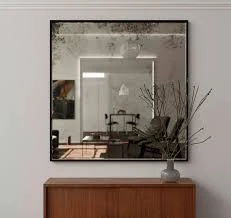

The Versatility of Tinted Glass Sheets A Comprehensive Overview
In the contemporary world of architecture and design, tinted glass sheets have emerged as a pivotal element, combining aesthetics with functionality. These specialized glass products are not merely decorative; they serve a multitude of purposes in various applications, ranging from residential buildings to commercial spaces and automotive industries. An exploration of tinted glass sheets reveals their diverse benefits, underlying technologies, and potential applications.
What Are Tinted Glass Sheets?
Tinted glass sheets are panes of glass that have been treated to reduce light transmission. This is typically achieved by adding various metal oxides or pigments during the glass production process. The result is a range of colors and shades that can filter sunlight, reducing glare and heat while maintaining visibility. Tints can range from subtle hues to dark shades, providing architects and designers with a wide palette for creative expression.
Benefits of Tinted Glass Sheets
1. Energy Efficiency One of the most significant advantages of tinted glass sheets is their ability to enhance energy efficiency in buildings. By filtering sunlight, these sheets help regulate indoor temperatures, thereby reducing the need for air conditioning in warm weather. This not only helps in minimizing energy consumption but also contributes to lower utility bills.
2. UV Protection Tinted glass offers a degree of protection against harmful ultraviolet (UV) rays. Prolonged exposure to UV radiation can damage furniture, carpets, and artwork, leading to fading and deterioration. Tinted sheets can block a substantial percentage of UV rays, helping to preserve the interior aesthetics of a space.
3. Privacy and Security Tinted glass enhances privacy without sacrificing natural light. This feature is particularly valuable in urban settings where buildings are close to one another. Moreover, darker tints can enhance security by making it difficult for outsiders to see inside the premises, thus adding an extra layer of protection.

4. Aesthetic Appeal The visual impact of tinted glass sheets is undeniable. The choice of color and tint intensity can dramatically alter the look of a building or space, adding sophistication and modernity. Architects often use tinted glass to create striking facades, integrating it seamlessly with other materials like metal and concrete.
Applications of Tinted Glass Sheets
Tinted glass sheets find applications across a broad spectrum of industries. In residential construction, they are commonly used in windows and sliding doors to enhance energy efficiency and comfort. In commercial architecture, large tinted glass facades can create impressive visual statements while promoting sustainability.
In the automotive industry, tinted windows are popular for both their aesthetics and functionality. They provide driver and passenger comfort by reducing glare and heat from the sun while also contributing to vehicle privacy.
Moreover, tinted glass sheets are also used in various interior applications, such as room dividers, shower doors, and partitions. They can create elegant yet practical solutions for both residential and commercial interiors, allowing natural light to filter through while delineating spaces.
Conclusion
In conclusion, tinted glass sheets offer a unique blend of beauty, practicality, and energy efficiency. As architectural trends continue to evolve, the demand for innovative materials like tinted glass is likely to increase. With their ability to balance design and functionality, tinted glass sheets will remain an integral part of modern construction, enhancing our built environment for years to come. Whether it is in homes, offices, or vehicles, their advantages are clear, making them a popular choice among designers and builders alike.